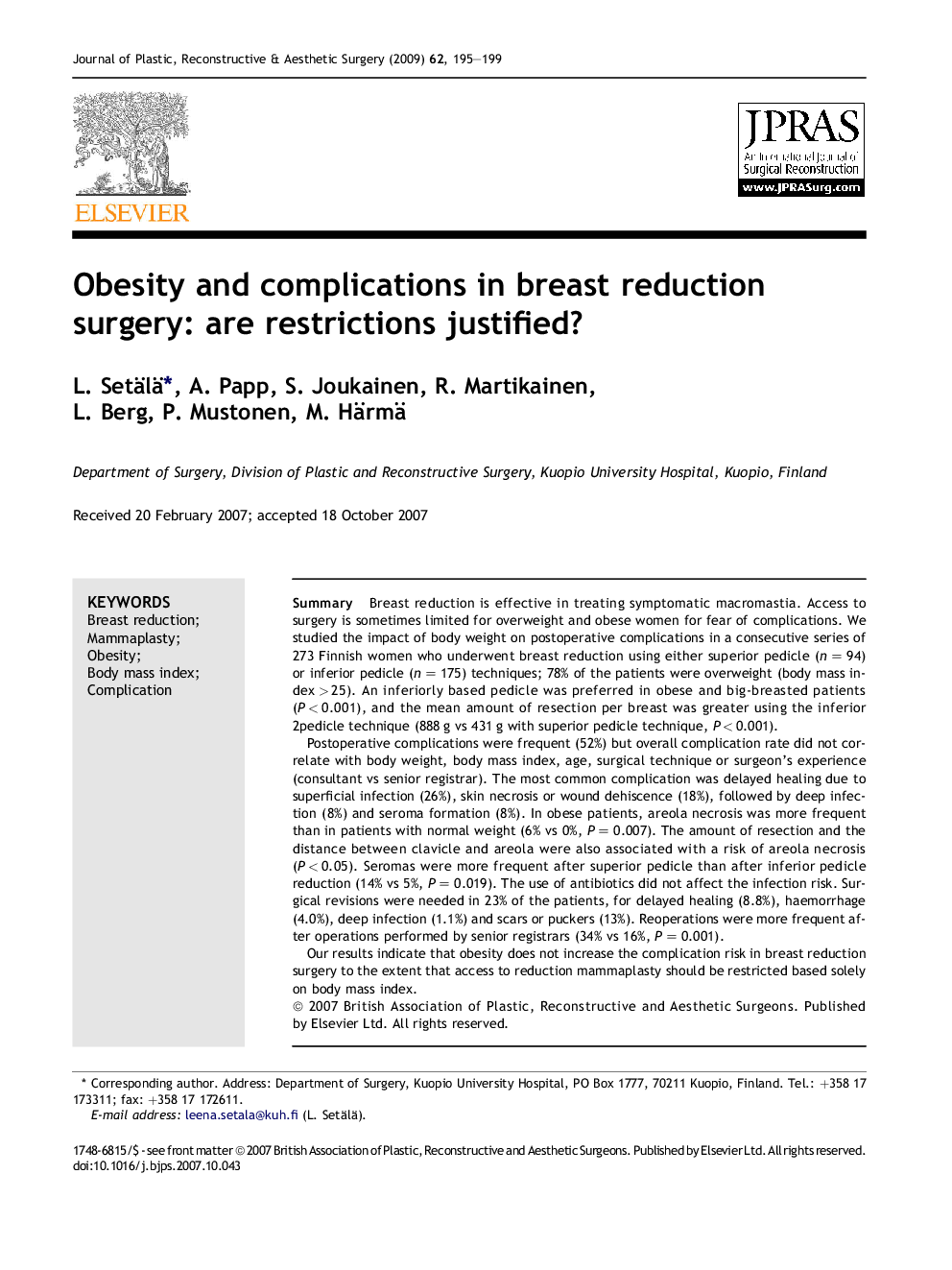| کد مقاله | کد نشریه | سال انتشار | مقاله انگلیسی | نسخه تمام متن |
|---|---|---|---|---|
| 4122105 | 1270412 | 2009 | 5 صفحه PDF | دانلود رایگان |

SummaryBreast reduction is effective in treating symptomatic macromastia. Access to surgery is sometimes limited for overweight and obese women for fear of complications. We studied the impact of body weight on postoperative complications in a consecutive series of 273 Finnish women who underwent breast reduction using either superior pedicle (n = 94) or inferior pedicle (n = 175) techniques; 78% of the patients were overweight (body mass index > 25). An inferiorly based pedicle was preferred in obese and big-breasted patients (P < 0.001), and the mean amount of resection per breast was greater using the inferior 2pedicle technique (888 g vs 431 g with superior pedicle technique, P < 0.001).Postoperative complications were frequent (52%) but overall complication rate did not correlate with body weight, body mass index, age, surgical technique or surgeon's experience (consultant vs senior registrar). The most common complication was delayed healing due to superficial infection (26%), skin necrosis or wound dehiscence (18%), followed by deep infection (8%) and seroma formation (8%). In obese patients, areola necrosis was more frequent than in patients with normal weight (6% vs 0%, P = 0.007). The amount of resection and the distance between clavicle and areola were also associated with a risk of areola necrosis (P < 0.05). Seromas were more frequent after superior pedicle than after inferior pedicle reduction (14% vs 5%, P = 0.019). The use of antibiotics did not affect the infection risk. Surgical revisions were needed in 23% of the patients, for delayed healing (8.8%), haemorrhage (4.0%), deep infection (1.1%) and scars or puckers (13%). Reoperations were more frequent after operations performed by senior registrars (34% vs 16%, P = 0.001).Our results indicate that obesity does not increase the complication risk in breast reduction surgery to the extent that access to reduction mammaplasty should be restricted based solely on body mass index.
Journal: Journal of Plastic, Reconstructive & Aesthetic Surgery - Volume 62, Issue 2, February 2009, Pages 195–199